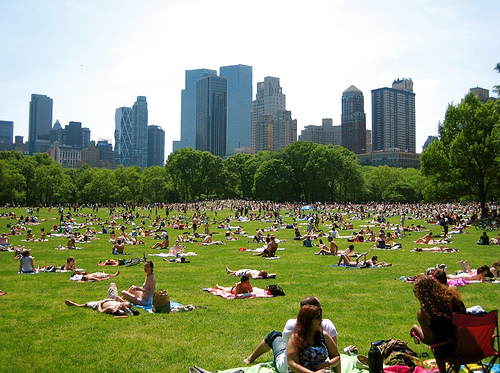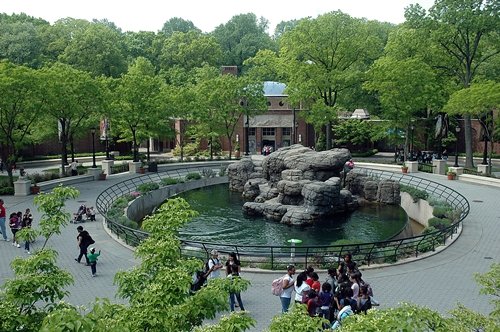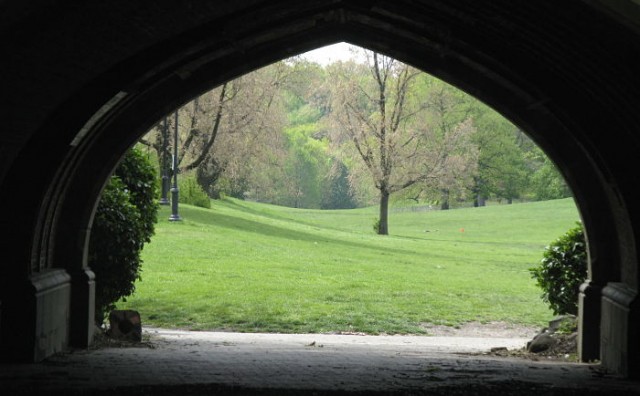 It was 190 years ago yesterday, April 26 1822, that Frederick Law Olmsted was born in Hartford, Connecticut. Though he held many titles over a long and eventful life, including farmer, journalist, and public administrator, he is most well-known as the United States’ foremost landscape architect and of course, the designer of our beloved Central Park.
It was 190 years ago yesterday, April 26 1822, that Frederick Law Olmsted was born in Hartford, Connecticut. Though he held many titles over a long and eventful life, including farmer, journalist, and public administrator, he is most well-known as the United States’ foremost landscape architect and of course, the designer of our beloved Central Park.
Olmsted’s career as a landscape architect surprisingly began with Central Park in 1857. It’s impossible to imagine Manhattan without Central Park, yet public parks were somewhat of an innovation in American cities at the time and their true value is still being speculated on today.
In 1865 Olmsted and his partner Calvert Vaux embarked on their second collaboration  designing Brooklyn’s Prospect Park. As revolutionary a design as was Central Park, Olmsted considered Prospect Park to be his masterpiece; the most elegant synthesis of his key ideals of the pastoral and the picturesque in landscape design.
designing Brooklyn’s Prospect Park. As revolutionary a design as was Central Park, Olmsted considered Prospect Park to be his masterpiece; the most elegant synthesis of his key ideals of the pastoral and the picturesque in landscape design.
 The social impact of these two projects alone cannot be overstated. On a local level they provided New York, and what was then the city of Brooklyn, both of which were growing at a phenomenal rate, with much desired, and much needed green space within a dense and intensely oppressive urbanization. The parks were an oasis from the crowds, noises, and smells of these 19th century industrial cities. They were also a bold experiment in social egalitarianism. Designed with the loftiest goals in mind, and costing exorbitant amounts of money to build, the parks were there to be used by all; from the wealthiest socialites to the poorest immigrants.
The social impact of these two projects alone cannot be overstated. On a local level they provided New York, and what was then the city of Brooklyn, both of which were growing at a phenomenal rate, with much desired, and much needed green space within a dense and intensely oppressive urbanization. The parks were an oasis from the crowds, noises, and smells of these 19th century industrial cities. They were also a bold experiment in social egalitarianism. Designed with the loftiest goals in mind, and costing exorbitant amounts of money to build, the parks were there to be used by all; from the wealthiest socialites to the poorest immigrants.
These two experiments proved to be so successful, and the social benefits so far  outweighed the monetary costs that it soon became de rigueur for any up-and-coming American city to have one. By the end of his life, Olmsted had had hundreds of commissions for parks and green spaces throughout the US. Through his masterful designs, his tireless efforts as a social commentator, and his role as New York’s parks commissioner, the idea of public parks as a social necessity slowly started to spread and become part of this country’s national consciousness.
outweighed the monetary costs that it soon became de rigueur for any up-and-coming American city to have one. By the end of his life, Olmsted had had hundreds of commissions for parks and green spaces throughout the US. Through his masterful designs, his tireless efforts as a social commentator, and his role as New York’s parks commissioner, the idea of public parks as a social necessity slowly started to spread and become part of this country’s national consciousness.
 The issue of public spaces is still hotly debated today. New York and Brooklyn were still nascent cities at the time their great parks were constructed. Central Park and Prospect Park were pruned from the wilderness. Any new green spaces today must, of necessity, be carved from the accretion of two centuries of urbanization. Buildings and homes must be razed and highly valuable (and taxable) property must be taken and put aside for the public good; decisions fraught with economic and political complications. However, the value of our city’s parks is undeniable. And a city without them is inconceivable. It’s yet another point of pride for all New Yorkers that our city was the proving ground for a concept, indeed, a social movement, that would prove to be so essential to successful and sustainable urban life.
The issue of public spaces is still hotly debated today. New York and Brooklyn were still nascent cities at the time their great parks were constructed. Central Park and Prospect Park were pruned from the wilderness. Any new green spaces today must, of necessity, be carved from the accretion of two centuries of urbanization. Buildings and homes must be razed and highly valuable (and taxable) property must be taken and put aside for the public good; decisions fraught with economic and political complications. However, the value of our city’s parks is undeniable. And a city without them is inconceivable. It’s yet another point of pride for all New Yorkers that our city was the proving ground for a concept, indeed, a social movement, that would prove to be so essential to successful and sustainable urban life.
(If you’ve got some time on your hands, I highly recommend this excellent Channel Thirteen video on the history of Olmsted and New York’s Parks).